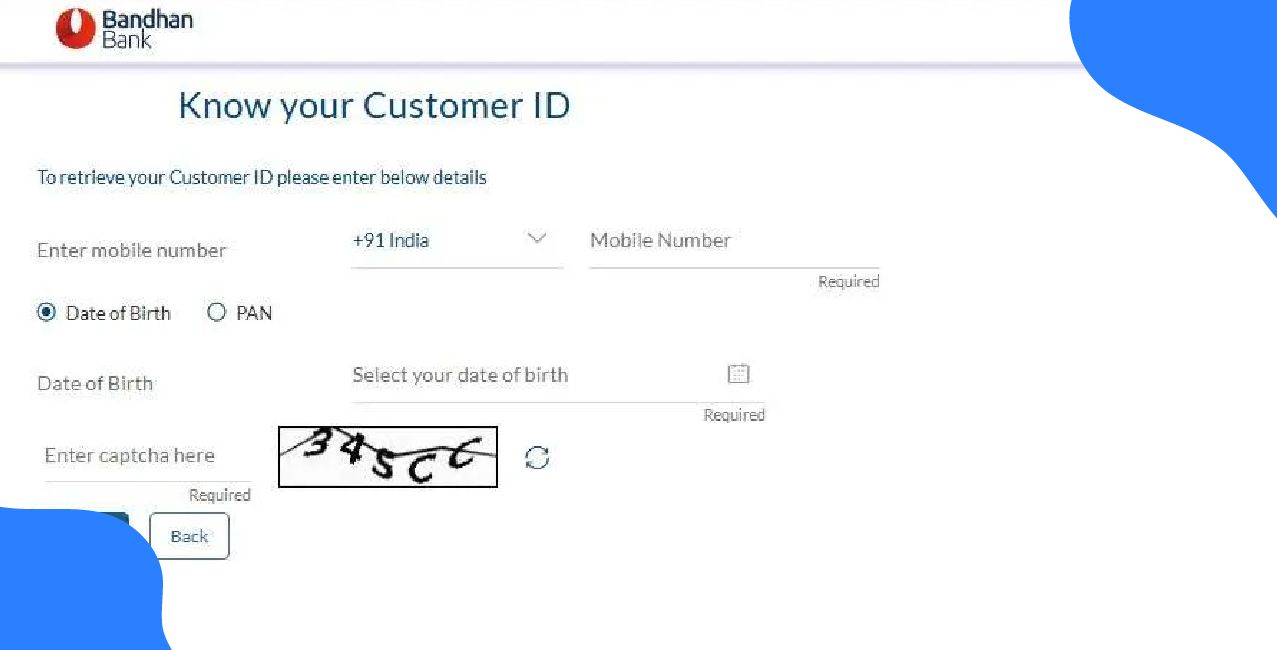
Author
LoansJagat Team
Read Time
7 Min
23 Jul 2025
List of Tax‑Free Bonds in India: Explore Options & Benefits
Tax-free bonds are government-backed fixed-income securities that pay interest that is completely exempt from income tax. They are issued by public sector companies to raise money for infrastructure and development projects.
Let’s take the example of Rahul, a 40-year-old government employee. He wants to invest in something safe that gives him regular income without worrying about paying tax. In 2020, he bought tax-free bonds worth ₹5,00,000 at an interest rate of 7.5% per year for 10 years.
Every year, he earns ₹37,500 as interest. Since the bond is tax-free, he receives the full amount without any TDS (Tax Deducted at Source) or additional tax liability.
Rahul’s Earnings from Tax-Free Bonds
This makes tax-free bonds ideal for long-term conservative investors who fall under higher tax brackets and want a safe, fixed income source.
Your Gateway to Tax-Free Income: A Step-by-Step Guide
Let’s take the case of Anita, a 45-year-old schoolteacher from Pune who wants a steady income without risking her money or paying tax on the interest earned. After speaking to her financial advisor, she decides to invest in tax-free bonds issued by a government-backed company like NHAI (National Highways Authority of India).
Step-by-Step: Anita’s Investment Journey
- Research and Selection
Anita checks current listings on stock exchanges (NSE/BSE) where older tax-free bonds are traded in the secondary market, since no new tax-free bonds have been issued in recent years. She chooses a bond from HUDCO with a remaining maturity of 7 years and a 6.8% interest rate.
- Demat Account
She already holds a Demat and trading account with a registered stockbroker. This allows her to buy listed bonds just like shares.
- Buying the Bonds
Anita places an order through her broker's online platform and purchases ₹4,00,000 worth of bonds at the current market price.
- Receiving Interest
Every year, Anita receives tax-free interest directly into her linked bank account. Since the bond pays annually, she knows exactly when and how much she will receive.
Anita’s Investment Summary
Tax-free bonds offer safety, regular income, and tax exemption, making them a smart choice for conservative investors like Anita who prefer peace of mind over high returns.
Why Tax-Free Bonds Stand Out?
Tax-free bonds come with a set of benefits that make them ideal for risk-averse investors. To understand their features better, let’s look at the example of Mr Sharma, a retired bank officer who wants regular, tax-free income without worrying about market ups and downs.
Mr Sharma’s Investment in Tax-Free Bonds
In 2019, Mr Sharma invested ₹6,00,000 in REC (Rural Electrification Corporation) tax-free bonds for a tenure of 10 years, offering an annual interest rate of 7.25%. He chose this option because he wanted fixed returns without worrying about paying income tax.
Every year, Mr Sharma receives ₹43,500 straight into his bank account without any deductions. He uses this amount to manage household expenses during his retirement.
These features make tax-free bonds a dependable and tax-efficient option for people who prefer peace of mind over high but uncertain returns.
Advantages and Disadvantages of Tax-Free Bonds
Tax-free bonds are a popular choice for people who want safe, long-term investments with regular income. Like all investments, they have both benefits and limitations. Here’s a simple breakdown:
Advantages
- Tax-Free Income
You don’t pay any income tax on the interest earned from these bonds.
- Low Risk
These bonds are issued by government-backed companies, so they carry very little risk.
- Fixed Annual Returns
You receive a fixed amount of interest every year, which helps with planning your finances.
- Good for Long-Term Goals
With tenures of 10, 15, or 20 years, they suit people who want steady income over time.
- Tradable on Stock Markets
If you need money early, you can sell them on stock exchanges, just like shares.
Disadvantages
- Low Liquidity
You cannot withdraw your money quickly like in a savings account; selling depends on market demand.
- Not for Short-Term Needs
They don’t suit people looking for quick profits or short-term returns.
- Lower Interest Compared to Other Options
The interest rate is lower than some fixed deposits or mutual funds, especially if you are in a lower tax bracket.
- No Tax Benefit on Investment
While the interest is tax-free, the amount you invest doesn’t give any tax deduction under Section 80C.
- Market Price May Fluctuate
If you sell the bond before maturity, you may get less than what you paid, depending on market rates.
How to Calculate the Yield of Tax-Free Bonds?
Yield helps you understand how much return you get on your investment each year. For tax-free bonds, the yield is especially important because the interest is not taxed—what you earn is what you keep.
Let’s go through a simple example to show how to calculate it.
Example:
Suppose Ravi buys a tax-free bond with the following details:
Step-by-Step Calculation
- Find the Annual Interest
Multiply the face value by the coupon rate:
₹10,000 × 7% = ₹700 per year
- Calculate the Yield
Use this formula:
Yield (%) = (Annual Interest / Purchase Price) × 100
So, Yield = (₹700 / ₹10,000) × 100 = 7%
Final Result
The yield on Ravi’s bond is 7%, which means he earns ₹700 every year for five years, and he doesn’t pay any tax on this income.
This method is helpful when you want to compare different bond options or assess whether you're getting a fair return on your money.
Who Should Invest in Tax-Free Bonds?
Tax-free bonds suit people who want safe, long-term income without paying tax on interest earned. These bonds are ideal for individuals in higher tax brackets, as the tax exemption improves their effective returns. They also appeal to cautious investors who prefer stable earnings over risky growth.
The following types of investors can invest in tax-free bonds:
1. Retail Investors
Individual investors, including non-resident Indians (NRIs) and Hindu Undivided Families (HUFs), can invest in tax-free bonds. They often invest up to ₹10 lakhs and prefer tax-free income over higher returns with tax liability.
2. High Net Worth Individuals (HNIs)
People with large amounts to invest and a low tolerance for risk often choose tax-free bonds. Even if they can invest more than ₹10 lakhs, they seek steady returns without market uncertainty.
3. Institutions and Organisations
Entities such as corporates, regional rural banks, cooperative banks, trusts, partnership firms, and limited liability partnerships can invest in these bonds to diversify their portfolios and receive tax-free interest income.
4. Qualified Institutional Buyers (QIBs)
As per SEBI Guidelines (2000), QIBs include mutual funds, pension funds, insurance companies, and foreign institutional investors. These institutions invest large sums in safe, tax-efficient instruments like tax-free bonds.
List of Tax-Free Bonds in India 2025
Conclusion
Tax-free bonds in India offer a safe and steady way to earn income without paying tax on interest. They suit investors who want long-term returns with low risk, especially those in higher tax brackets. By choosing bonds from trusted issuers like NHAI, PFC, REC, or IRFC, investors can enjoy fixed returns and protect their capital. Overall, tax-free bonds are a smart option for anyone looking to build a tax-efficient and secure investment portfolio.
FAQ’s
1. What are tax-free bonds in India?
Tax-free bonds are government-backed securities that pay interest, which is not taxed under Indian law.
2. Who can invest in tax-free bonds?
Anyone, including individuals, NRIs, HUFs, and companies, can invest in tax-free bonds in India.
3. Which are the top issuers of tax-free bonds?
Top issuers include NHAI, REC, PFC, IRFC, and HUDCO.
4. Are tax-free bonds safe to invest in?
Yes, tax-free bonds are very safe as they have government backing and carry low credit risk.
5. Can I sell tax-free bonds before maturity?
Yes, you can sell them on stock exchanges, but the price depends on market demand.
About the Author

LoansJagat Team
‘Simplify Finance for Everyone.’ This is the common goal of our team, as we try to explain any topic with relatable examples. From personal to business finance, managing EMIs to becoming debt-free, we do extensive research on each and every parameter, so you don’t have to. Scroll up and have a look at what 15+ years of experience in the BFSI sector looks like.

Quick Apply Loan
Subscribe Now


